Nara in Bilbao, Frankenthaler in Florence, Goldin in Berlin, and more – our selection of the standout shows already running or set to open in the coming months
1, Bonnard-Matisse, a friendship
Fondation Marguerite et Aimé Maeght, Saint-Paul de Vence
Until 6 October 2024
The opening night of Fondation Maeght in 1964 had all the glow of the Jazz Age. Among the glitzy Riviera crowd in the south of France were the writers James Baldwin and André Malraux, and the artists Joan Miró and Marc Chagall. Guests were serenaded by the mercurial voice of Ella Fitzgerald and the Gallic baritone of Yves Montand.
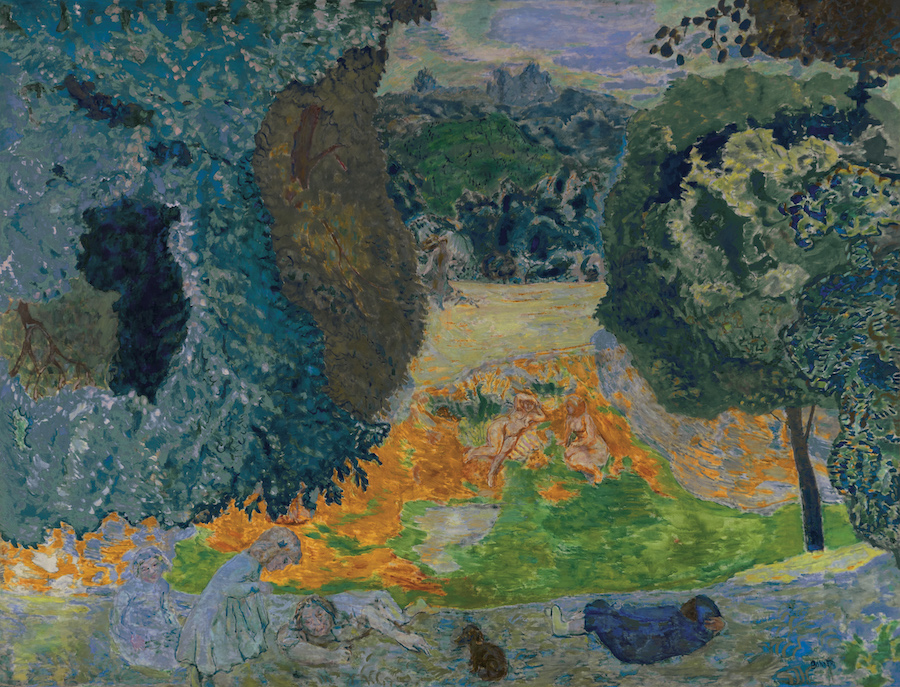
Pierre Bonnard, L’Été, 1917, oil on canvas, 260 × 340 cm, source: Fondation Maeght
Sixty years on, Fondation Maeght is still one of the most beautiful museums in the world. Overlooking the pretty hill-top town of Saint-Paul de Vence, the low-key, elegantly minimalist building is a sanctuary to art. Designed by Miró’s close friend Josep Lluís Sert, it contains a collection of light-filled galleries and a shaded sculpture garden. ‘Only Aimé Maeght could do that!’ said Chagall, acknowledging the sheer determination of the art dealer and his wife Marguerite to will this temple of modern art into existence.
To celebrate its 60th birthday, the museum is holding an exhibition that explores the little-known friendship between Pierre Bonnard, Henri Matisse and the Maeghts. Born just two years apart, Bonnard and Matisse met in 1905, but it was not until the outbreak of the Second World War that they became close. Both men were isolated in their respective homes in the south of France. ‘I need to see a painting other than my own,’ wrote Bonnard to his friend, and they continued an empathetic correspondence until Bonnard’s death in 1947. Together with paintings and sketches by the artists, the exhibition presents a wealth of rarely seen footage, photographs and correspondence that reveals an intimate picture of these two great masters of modern art.
2, Yoshitomo Nara
Guggenheim Bilbao, Spain
Until 3 November 2024
Born in 1959 in the Japanese city of Hirosaki, Yoshitomo Nara is best known today for his cartoon-like paintings of children with outsized heads and wide-set eyes: at times menacing, melancholic or meditative. This retrospective – his first significant show in a major European museum – explores the inspiration behind those figures, which have been the cornerstone of his art since the 1990s. One source was the loneliness he experienced, first as a latchkey child in Japan, and later as a student who enrolled at the Kunstakademie Düsseldorf despite speaking not a word of German.
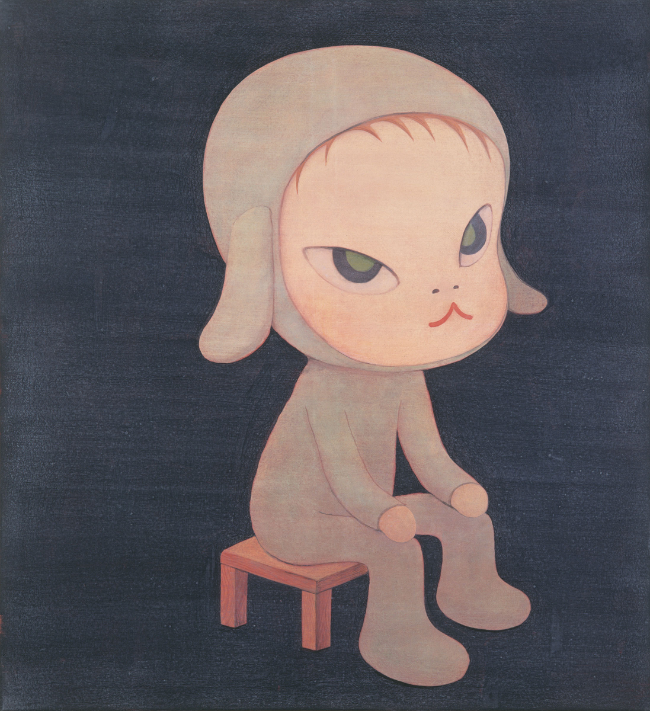
Yoshitomo Nara (b. 1959), Sleepless Night (Sitting), 1997. Acrylic on canvas. 120 × 110 cm.
Courtesy of the Rubell Museum, Miami and Washington, D.C.
© Yoshitomo Nara, courtesy Yoshitomo Nara Foundation
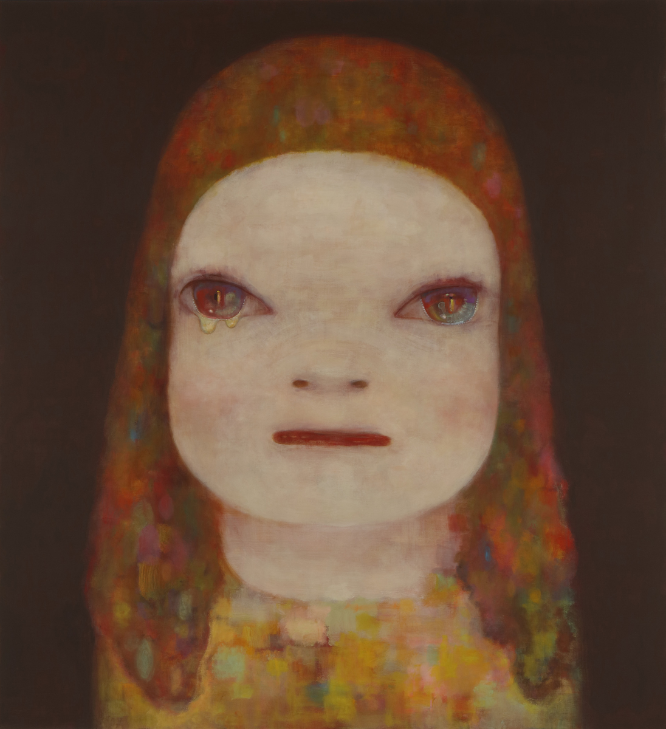
Yoshitomo Nara (b. 1959), Midnight Tears, 2023. Acrylic on canvas. 140.5 × 220 cm. Collection of the artist.
© Yoshitomo Nara, courtesy Yoshitomo Nara Foundation
Nara’s subjects are typically depicted alone, on monochrome grounds, with no accompanying narrative – so the viewer’s encounter with them is raw and unmediated. The curators suggest that part of the artist’s success stems from his skilful fusion of high and low art, and of Eastern and Western influences. They also consider the emotional shift in his work since the Great East Japan Earthquake of 2011 and the ensuing tsunami. Bilbao is this show’s first stop of three, followed by the Museum Frieder Burda in Baden-Baden and the Hayward Gallery in London.
3, Franz Gertsch
Louisiana Museum of Modern Art, Denmark
Until 10 November 2024
The Swiss artist Franz Gertsch had his international breakthrough in 1972 with the monumental work Medici, depicting five hipsters leaning on a barrier. Painted in an uncanny photorealist style, these achingly cool quasi-rock stars, in their leather jackets, sunglasses and jeans, appear to be at the centre of the cultural universe. Behind the allure, however, are questions about truth, lies and the power of magnification. Can you really believe the artist’s eye? On seeing Gertsch’s eerie portraits, psychedelic guru Timothy Leary was prompted to say they held ‘a new reality, a new time-space picture’.
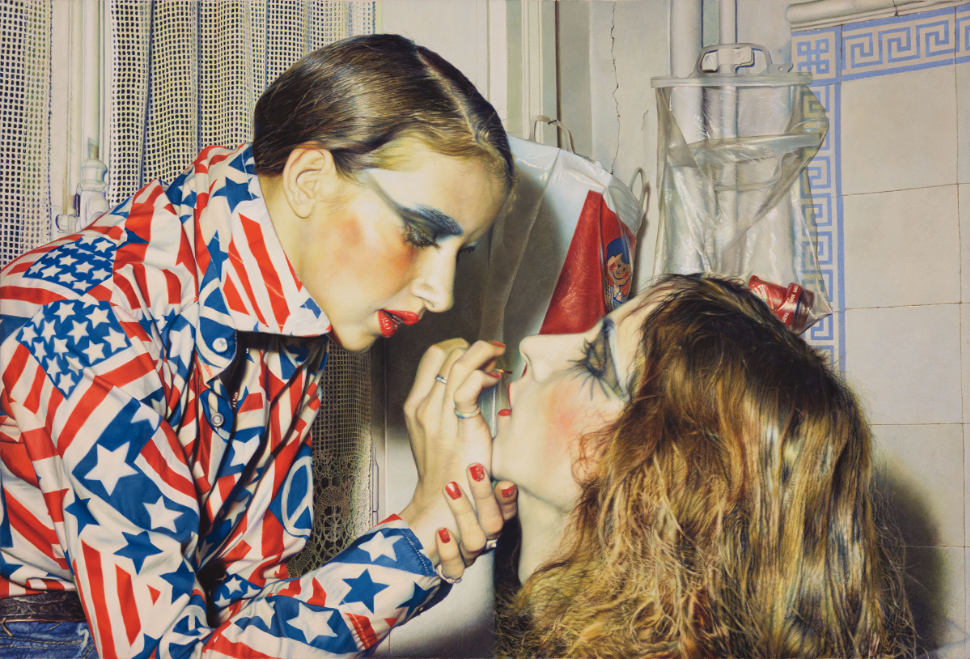
Franz Gertsch (1930-2022), Marina schminkt Luciano (Marina Making up Luciano), 1975. Acrylic on unprimed cotton. 234 × 346 cm.
Museum Ludwig, Cologne. © Franz Gertsch AG Dominique Uldry (2020)
This exhibition brings together 60 of these mind-expanding artworks, charting the photorealist’s progress from early, career-defining portraits of the musician Patti Smith and the artist Luciano Castelli with his gang of Junge Wilde, to late monumental woodcuts of the landscape near his home in Rüschegg. The show also reveals how Michelangelo Antonioni’s moody, avant-garde film Blow-Up inspired the disconcerting atmosphere of Gertsch’s work.
4, Becoming Anna-Eva Bergman
National Museum of Norway, Oslo
Until 24 November 2024
The Norwegian painter Anna-Eva Bergman was born in Sweden but spent much of her life in Paris, creating large-scale canvases that fluidly blend figuration and abstraction. Although she exhibited widely in her lifetime, she remains under-appreciated today. A string of solo exhibitions devoted to her life and work are putting this right, among them Becoming Anna-Eva Bergman at the National Museum of Norway.
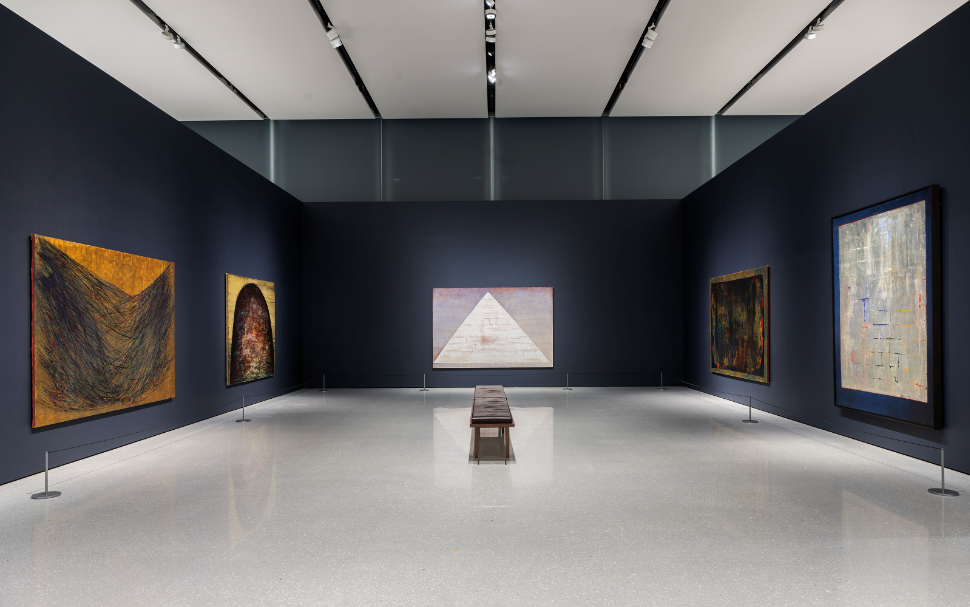
Installation view of Becoming Anna-Eva Bergman at the National Museum of Norway/Børre Høstland. Shown in the centre is her 1960 work
in oil and metal leaf on canvas, N°6-1960 Pyramide. Artworks: © Fondation Hartung Bergman/BONO
This exhibition, a version of which was first shown at the Musée d’Art Moderne in Paris in 2023, focuses on abstract compositions inspired by the landscapes of both Norway and France. It includes several monumental canvases created between 1950 and 1975, a period during which Bergman experimented with metal leaf to create light within the image.
Central to the exhibition is Bergman’s large-scale triptych, commissioned in 1951, for a new bar at the Hotel Farris Bad in Larvik, on the coast of Norway. It is the only decorative commission she ever completed, and it is being shown here in its entirety for the first time since 1956. Other notable highlights include Nº4-1957 La grande montagne (1957) and Nº6-1960 Pyramide (1960), which is on loan from the Fondation Hartung Bergman in Antibes.
5, Surrealism
Centre Pompidou, Paris
4 September 2024 to 13 January 2025
To mark the 100th anniversary of André Breton’s publication of the Surrealist Manifesto, the Centre Pompidou is hosting an exhibition that traces Surrealist creativity from 1924 to 1969. Organised chronologically and thematically, it will examine the literary figures who inspired the movement – including Lewis Carroll, the Marquis de Sade and Comte de Lautréamont – as well as the poetic principles, forms and motifs that structured its imagery.
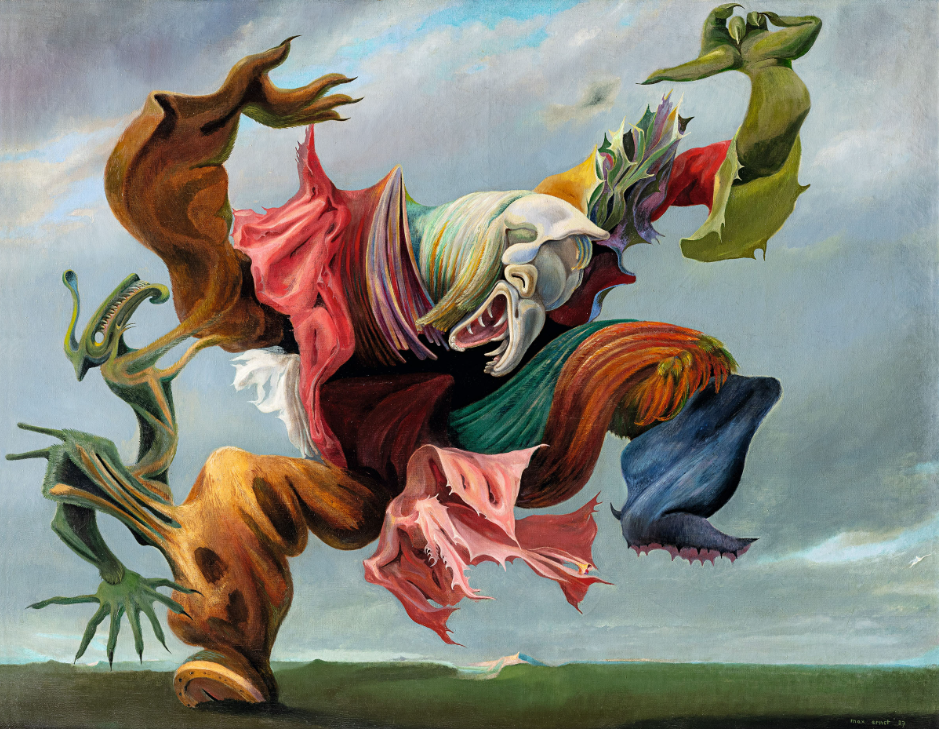
Max Ernst (1891-1976), L’ange du foyer (Le triomphe du surréalisme), 1937. Oil on canvas. 14 × 146 cm. Collection particulière
The show brings together well-known paintings, drawings, films, photographs and literary documents by leading Surrealists, with highlights on loan including The Great Masturbator by Salvador Dalí from Museo Reina Sofía; René Magritte’s Personal Values from the San Francisco Museum of Modern Art; and The Great Forest by Max Ernst (Kunstmuseum Basel). Shown alongside these will be key works by leading female Surrealists, including Dora Maar, Dorothea Tanning and Leonora Carrington.
6, Matisse – Invitation to the Voyage
Fondation Beyeler, Riehen, Switzerland
22 September 2024 to 26 January 2025
Following a string of shows dedicated to some of the 20th century’s titans of art – Gauguin in 2015, Monet in 2017 and Picasso in 2019, Switzerland’s Fondation Beyeler is now inviting visitors to journey through the groundbreaking oeuvre of Henri Matisse.
The show promises to include important works from all his key periods: early paintings that took cues from the Impressionists (The Dinner Table, 1897); his experiments with Fauvism (The Open Window, Collioure, 1905); then Expressionism (Bathers with a Turtle, 1907/08); the development of his Odalisques (Decorative Figure on an Ornamental Background, 1925-26); and his late cut-outs (Blue Nude I, 1952). Loans are courtesy of the Centre Pompidou in Paris, the National Gallery of Art in Washington, D.C., and the Museum of Modern Art in New York, among other institutions, as well as several important private collections.

Henri Matisse (1869-1954), Grand Nu Couché (Nu Rose), 1935. Oil on canvas. 66.4 × 93.3 cm. The Baltimore Museum of Art: The Cone Collection.
© Succession Henri Matisse / 2024, ProLitteris, Zurich. Photo: © The Baltimore Museum of Art: The Cone Collection / Mitro Hood
The exhibition’s title – Invitation to the Voyage – is borrowed from Charles Baudelaire’s famous 1857 poem, in which the writer invites his mistress to imagine an exotic world they could visit. According to the show’s curator, Raphaël Bouvier, the poem was frequently referenced by Matisse, and its essence can be felt throughout his work.
7, Asian Bronze. 4,000 years of beauty
Rijksmuseum, Amsterdam
27 September 2024 to 12 January 2025
Since its invention some 5,000 years ago, bronze – an alloy of copper and tin – has been a favourite metal for artisans, largely thanks to the fact that it’s both strong and ductile.
The Rijksmuseum’s upcoming exhibition traces the use of the metal in Asia across the millennia, through 75 masterpieces in the medium, including bells, incense burners and weapons. Most of the artefacts have never been on show before in the Netherlands, while 15 are appearing in Europe for the first time.
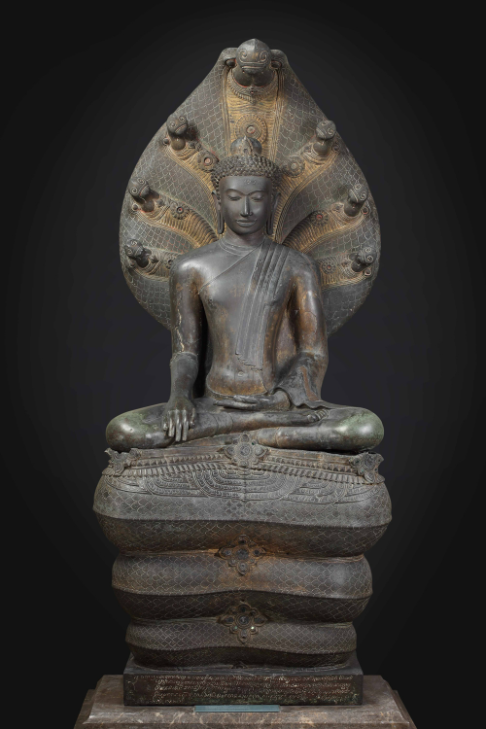
Buddha under Naga’s hood, Thailand, 12th-13th century. National Museum, Bangkok
One standout object is a stunning wine vessel shaped like an elephant. It dates from China’s Shang dynasty, which flourished about 3,500 years ago, and is being lent by the Musée Guimet in Paris. Another is the statue of Buddha under Naga’s hood, which belongs to the National Museum in Bangkok and is leaving Thailand for the first time since it was cast in the 12th or 13th century.
The show is accompanied by a book, Asian Bronzes. 4,000 Years of Beauty, published in English and Dutch, as well as a symposium to be held at the museum on 9 and 10 January 2025.
8, Monet and London. Views of the Thames
The Courtauld, London
27 September 2024 to 19 January 2025
At the turn of the 20th century, London was the most populous city on Earth, boasting more than six million inhabitants. Among those captivated by the size – as well as the wealth and weather – of the British capital was Claude Monet. The French Impressionist visited in 1899, 1900 and 1901, staying for a combined total of six months across the three trips, and producing around 100 canvases featuring the River Thames.
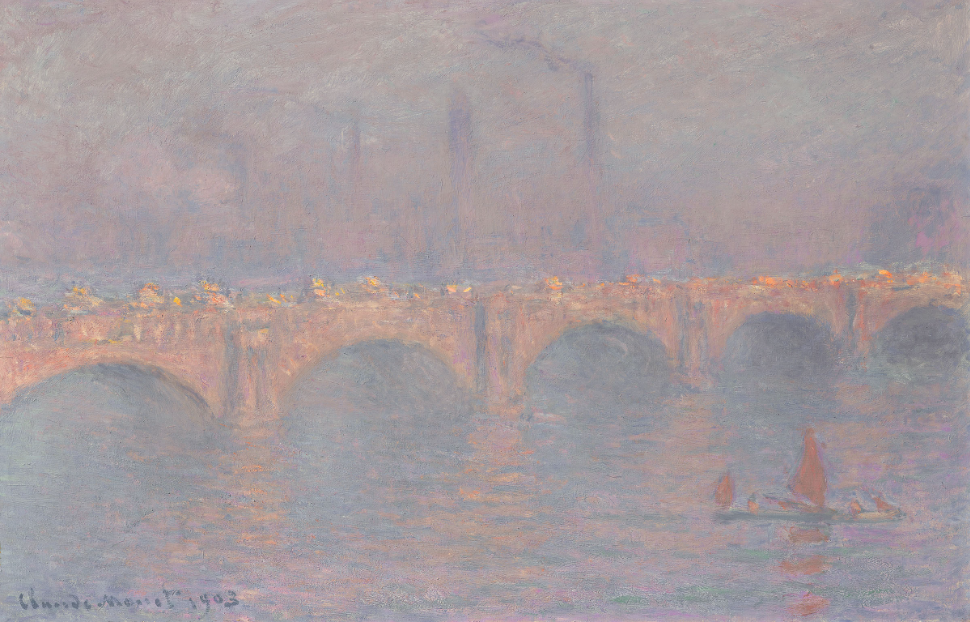
Claude Monet (1840-1926), Waterloo Bridge, soleil voilé, 1899-1903. Oil on canvas. Private collection. Photo: Bridgeman Images
Waterloo Bridge, Charing Cross Bridge (aka Hungerford Bridge) and the Houses of Parliament were his favoured subjects, typically seen through the veil of London’s fog (partly natural, partly the result of the city’s heavy industrialisation through the 19th century). Monet showed 37 of his evocatively atmospheric Thames works in Paris in 1904, and wished to repeat the exhibition in London itself the following year. The project fell through, however, and his artistic attention largely shifted thereafter to his gardens in Giverny.
Thanks to loans from public and private collections worldwide, the Courtauld is now set to give London a version of the exhibition it never had – with the first substantial showing of Monet’s Thames pictures in the city that inspired them. The artist’s 120-year-old wish is about to come true.
9, Helen Frankenthaler: Painting without Rules
Fondazione Palazzo Strozzi, Florence
27 September 2024 to 26 January 2025
Helen Frankenthaler was a decisive figure in the post-war American art scene, playing a key role in the development of the Colour Field movement. In particular, it was the invention of her ‘soak-stain’ method of applying oil paint heavily diluted with turpentine onto unprimed canvas, which she developed in the 1950s, that enabled her to make huge, lyrical, abstract paintings with a vivid yet diaphanous sense of rhythm and tone.
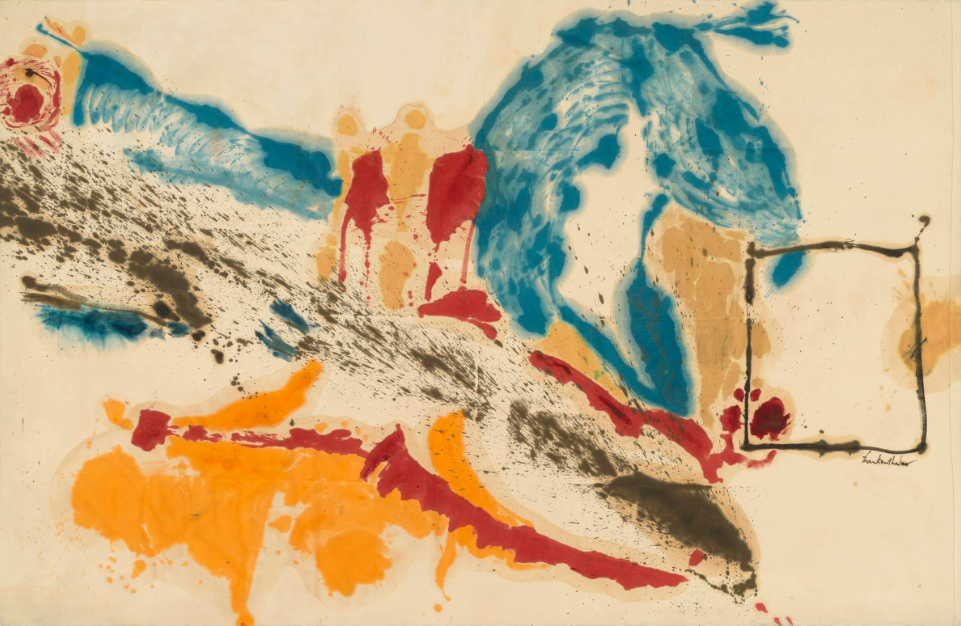
Helen Frankenthaler (1928-2011), Alassio, 1960. Oil on canvas. 85¼ × 131 in (216.5 × 332.7 cm).
© 2024 Helen Frankenthaler Foundation, Inc. / Artists Rights society (ARS), New York
A new show, organised between Florence’s Fondazione Palazzo Strozzi and the Helen Frankenthaler Foundation in New York, celebrates the artist’s six-decade-long career. It’s the largest exhibition of her work ever to take place in Italy, featuring 30 paintings created between 1953 and 2002, hanging chronologically on the walls of the Renaissance palace. And to help build a bigger picture of Frankenthaler’s world, these are punctuated by pieces made by some of her inner circle, including Jackson Pollock, Anthony Caro, Morris Louis, Kenneth Noland, Mark Rothko and Anne Truitt, as well as her husband, Robert Motherwell.
‘Frankenthaler’s artistic circle was like an ecosystem of creative forces in constant play,’ says Douglas Dreishpoon, the show’s curator and director of the artist’s catalogue raisonné. ‘Seeing their work in close company enables us to better understand Frankenthaler’s own innovations.’
10, Michelangelo, Leonardo, Raphael: Florence, c. 1504
Royal Academy of Arts, London
9 November 2024 to 16 February 2025
The Royal Academy’s winter blockbuster pays homage to the greatest trio of the Italian Renaissance: Michelangelo, Leonardo and Raphael. Featuring drawings, paintings and sculpture, it focuses on the rivalry between Michelangelo and Leonardo, who had both returned to Florence by the turn of the 16th century, as well as the influence the two had on the young Raphael.

Leonardo da Vinci (1452-1519), Virgin and Child with Saint Anne and the Infant Saint John the Baptist (‘The Burlington House Cartoon’),
circa 1499-1500. Charcoal (and wash?) heightened with white on paper, mounted on canvas.
141.5 × 104.6 cm. The National Gallery, London. Photo: The National Gallery, London
The exhibition begins with Michelangelo’s celebrated Taddei Tondo, a marble sculpture depicting the Virgin and Child with the infant John the Baptist, and finishes with studies by Leonardo and Michelangelo for their unfinished murals intended for the new council hall at the Palazzo Vecchio in Florence. In between, you’ll encounter some of the finest examples of Italian Renaissance drawings, including Leonardo’s ‘Burlington House Cartoon’ (c. 1499-1500), on loan from the National Gallery in London.
11, The Great Mughals: Art, Architecture and Opulence
V&A South Kensington, London
9 November 2024 to 5 May 2025
This exhibition celebrates the extraordinary creative achievements and internationalist culture of Mughal Hindustan during the reign of its most famous emperors: Akbar (r. 1556-1605), Jahangir (r. 1605-27) and Shah Jahan (r. 1628-58).
Featuring more than 200 works displayed chronologically across three sections, it will showcase the exceptional skill of the Persian and Hindustani artists in the imperial workshops during the golden age of the Mughal court (c. 1560-1660), as well as the influence of European art, which was introduced to the court by Christian missionaries, foreign ambassadors and merchants.
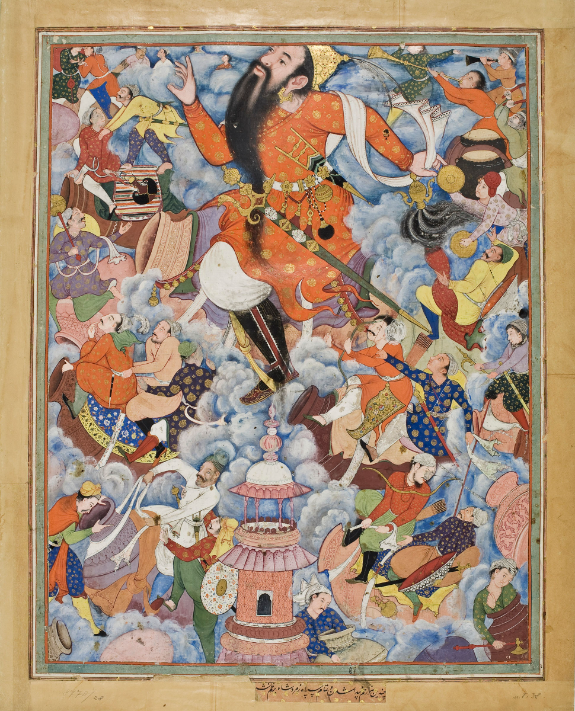
The giant Zumurrud Shah flees with his army by flying away on urns sent by sorcerers.
Folio from the Hamzanama, circa 1562-77. Opaque watercolour and gold on cotton backed with paper.
MAK – Museum of Applied Arts, Vienna. Photo: © MAK / Georg Mayer
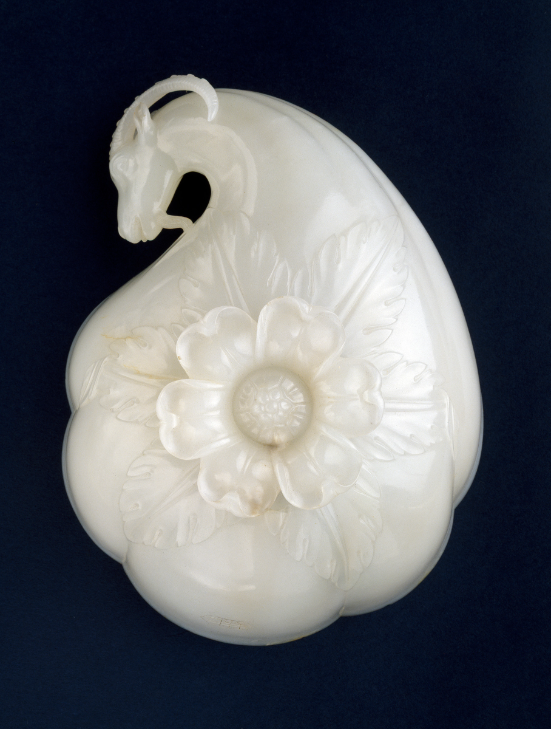
A white nephrite jade wine cup made for the Emperor Shah Jahan in 1657.
Photo: © Victoria and Albert Museum, London
Other treasures include a unique nephrite jade cup made for Shah Jahan in 1657, and a selection of dazzling bejewelled objects from the Al Sabah collection, among them a gold dagger and scabbard set with more than 2,000 rubies, emeralds and diamonds.
12, Gabriele Münter: The Great Expressionist Woman Painter
Museo Nacional Thyssen-Bornemisza, Madrid
12 November 2024 to 9 February 2025
‘After a short period of agony, I made a great leap,’ the German painter Gabriele Münter wrote in her diary in the summer of 1908.
This leap was in fact a new, radical style of painting in which spontaneous, simplified forms and bright, unmixed colours were used to capture the essence of things. Münter developed it with the help of her partner, Wassily Kandinsky, and in 1911 it became the look and feel of a collective of Expressionist painters with the couple at its centre, named Der Blaue Reiter (‘The Blue Rider’).

Gabriele Münter, The Blue Lake, 1934, source: Lentos Art Museum Linz
Münter’s first retrospective in Spain charts her rise and fall as a pivotal figure of German Expressionism. The exhibition starts with her passion for photography, which she discovered in America, then follows the development of her avant-garde painting as she moved around Europe, soaking up Fauvism, Post-Impressionism and Symbolism. It ends with her exile in Scandinavia and subsequent return to Germany, where her radical work was met with condemnation by the Nazi party.
The show builds on the four Münter pictures owned by the Thyssen-Bornemisza – School House, Murnau, 1908; Self-portrait, 1909-10; View from Her Brother’s House in Bonn, 1908; Murnau (Murnau in May), 1924 – to assemble an inventory of more than 100 paintings, drawings, prints and photographs. After February 2025, a recast version will travel to the Musée d’Art Moderne in Paris.
13, Nan Goldin: This Will Not End Well
Neue Nationalgalerie, Berlin
23 November 2024 to 6 April 2025
The American photographer Nan Goldin rose to fame in the late 1980s with The Ballad of Sexual Dependency (1981-2022), a seminal series of around 700 portraits sequenced against a music soundtrack, capturing intimate moments of love and loss. Since then, her raw photographic work has explored a wide range of social issues, from drug addiction and sex work to suicide and LGBT subcultures.
First seen at Amsterdam’s Stedelijk Museum in 2023, this exhibition centres on Goldin’s video installations and slideshows – works made up of moving images, voices, found footage and photographs from her archive – from across her four-decade career.
Each of the six slideshows on display will be installed in a separate room. In addition to The Ballad of Sexual Dependency, visitors will encounter The Other Side (1992-2021), a homage to Goldin’s trans friends, whom she photographed between 1972 and 2010; and Sisters, Saints and Sibyls (2004-2022), a deeply personal film that tells of the life and martyrdom of Saint Barbara before exploring the story of Goldin’s older sister, another Barbara, who took her own life, aged 18.
Source: Christie’s







